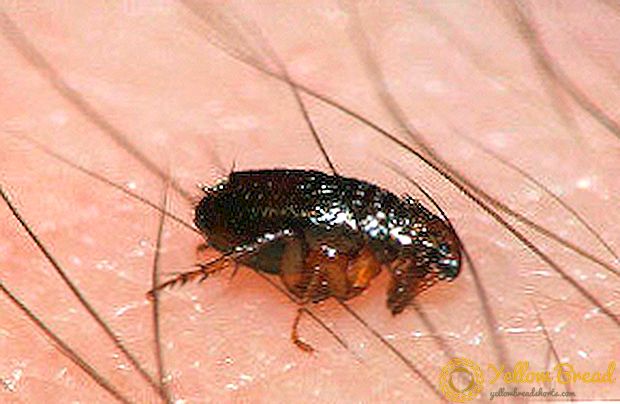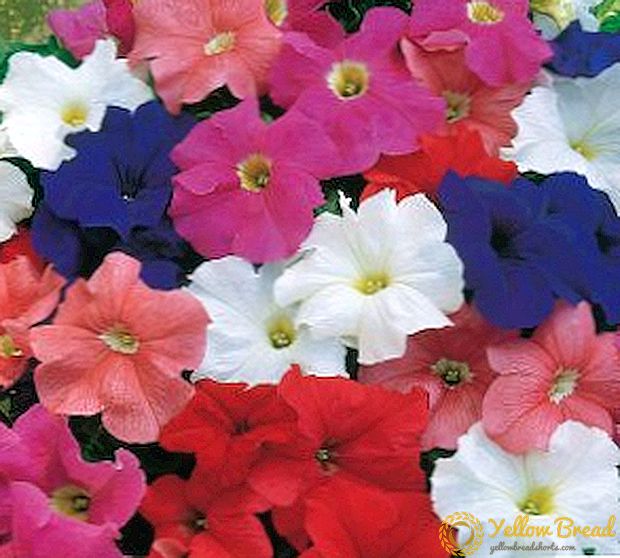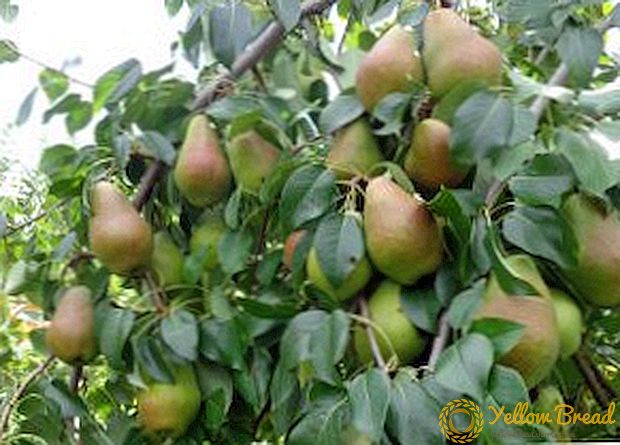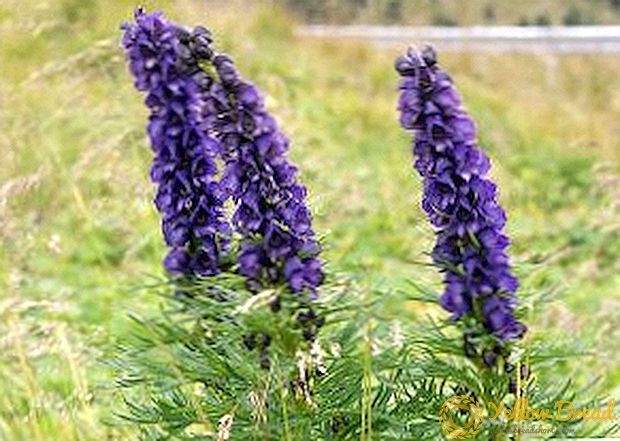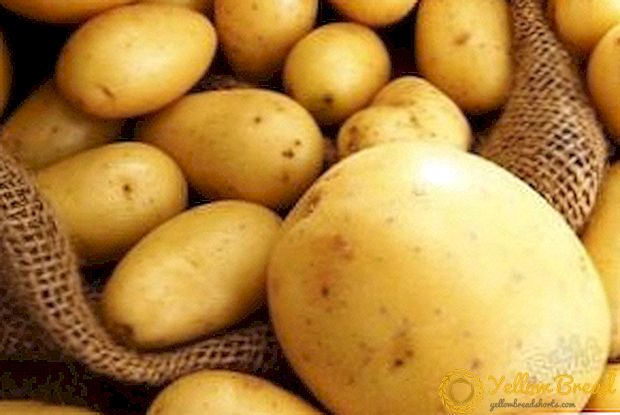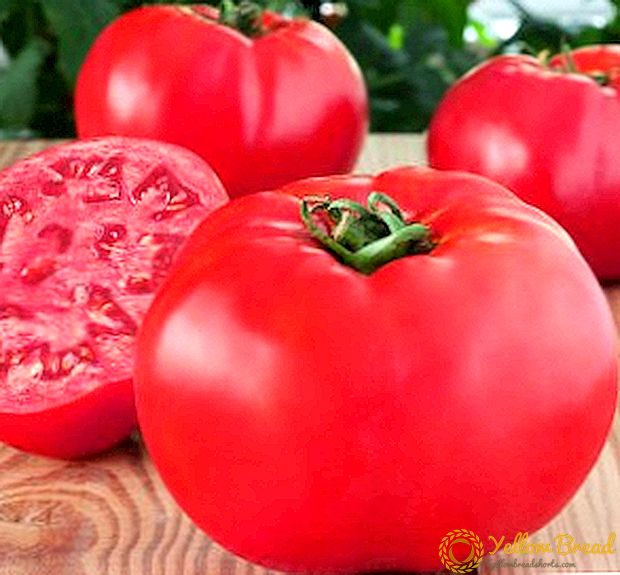
Different people grow grapes for different purposes: some simply "for themselves", others do these professionally and earn money by selling crops, while others strive to have a large ornamental plant on their land that would beautifully embrace the front of the house or the gazebo.
But there are those growers who report all efforts to find a variety that could combine all the above functions.
One of these grape varieties, which does not require much attention, is "Augustine".
Below we will try to uncover all the secrets and peculiarities of this variety in order to familiarize you with it as closely as possible and to simplify the preparation for planting a vine.
Description of grapes "Augustine"
Introducing you with this wonderful grape variety, first of all you should pay attention to the existence of several more of its names.
If you have to meet such varieties as "V25 / 20", "Pleven Sustainable" or "Phenomenon", you know - this is all the same "Augustine".
One of the names mentioned was obtained by one of its parents, the variety "Pleven", which, thanks to the efforts of Bulgarian breeders, was greatly improved.
Another form of parent "Augustine" is the grapes "Vilar Blanc", from which he received its resistance. This grape variety is intended for table use, that is, it is usually eaten fresh and not used for technical processing.
The grape variety described is varied fairly widely, which is facilitated by the early ripening of its fruits and good resistance to low temperatures.
In general, clusters of grapes "Augustine" have a lot of similar to the fruits of the variety "Pleven".

They are rather large in size, have a conical shape, often one wing can form. The average mass of one bunch can vary from 0.4 to 1 kilogram.
The berries on the bunch are not placed tightly, although their size is quite large - 2.8 x2.0 centimeters. The weight of the berries described varieties small - from 5 to 8 grams.
A distinctive feature of the berries is the white or amber-yellow color of their skin, due to which the sunlight gives the impression that they shine through.
This effect gives a special attractiveness elongated-oval grapes "Augustine", very much raising their presentation.
Taste qualities in this grape variety are generally ordinary, however, due to the dense fleshy pulp, the berries have a special tenderness and originality. In general, their taste is quite simple and harmonious.
There are a lot of sweets, because the variety boasts a good sugar accumulation, which does not decrease even with very heavy and private precipitations. Although the skin is strong, it does not feel when eating.
This table grape is considered very early because its fruit ripen around mid August.
The growing season of the bush on average lasts only 117 days. Fruiting is generally abundant and sometimes even requires rationing.
Experienced winegrowers note that if you leave only one inflorescence on one shoot, but the period of ripening of the crop will be reduced to about the bottom of 10. But, if you don’t have time to carry out such a robot, you will not have to worry about the harvest: although it will mature a little later, the bush will easily carry any number of fruits.
If we talk in figures about the possible yield volumes that can be collected from one hectare of plantings of this variety, then on average this figure is 120-140 centners.When amateur growing grapes, from one bush without problems, you can collect about 60 kilograms of berries.
Winegrowers love "Augustine" not only for the abundance of crops, but primarily for the fact that the bush fruit steadily, even with minimal care for him.
Speaking about the yield, you should pay attention to the quality, thanks to which it is possible to obtain some high results. First of all, it is a strong-growing shrub with well-ripening shoots, on which two inflorescences are stably laid.
The variety is very easy to propagate, aided by quickly rooted cuttings.
Briefly about others merits grapes "Augustine"

- The grape bush of the described variety has a bisexual flower, which ensures not only high and stable yields, but also the absence of pea berries and good pollination of all inflorescences. In addition, the variety "Augustine" is an excellent pollinator for many other grape varieties, the timing of flowering which coincides with it.
- The early terms of ripening of the crop and the ability of the berries is stored on the bush for about 2 weeks without loss of taste and appearance.
- Fruits are characterized not only by the high quality of the fruits, but also by their good suitability for transportation over long distances.
- The variety is characterized by increased resistance to the most common fungal diseases of vineyards.
- Wasps rarely damage fruit. This can only contribute to the presence of damaged berries, but in this case, the pest does not occur every year.
- The bush easily tolerates low winter temperatures. In particular, the thermometer readings at -24ºС wood is not damaged. But despite this, the variety belongs to covering crops, especially when grown in the Middle Climate Region.
- The strong-growing and unpretentious plant in leaving is an excellent decor for arches and arbors. In particular, when arched growing may increase the size of the clusters.
- The variety is one of the most promising in viticulture, used in breeding.
disadvantages varieties: what you need to be prepared in advance?
- With prolonged and prolonged rains, cracking of the berries is observed, which later becomes the cause of their rotting.
- Over-ripe berries, not removed from the bush for two weeks after maturity, begin to crumble on their own.
- There is damage from the graveyard that causes the berries to rot.
- In the berries of this variety there are a few seeds that are relatively large in size. Many growers consider this fact a big disadvantage of grapes.
- Prolonged transportation may cause the berries to fall from the bunch.
About the features of planting varieties
Grape culture multiplies quite simply. Moreover, there are several ways to plant this beautiful plant:
- Planting varietal seedlings grown on their own roots, or grafted.
- Reproduction using cuttings grafted on the stocks with a large stock of perennial wood.
- Use for breeding seeds.
- Getting a new bush using taps.

Choose one way or another is only based on your own capabilities and resources. For example, in the absence of an old grape bush or the ability to propagate "Augustine" taps, these options automatically fall away for you.
The time of the year and the time of planting the grapevine will depend on what kind of planting you have chosen. If you have purchased a green seedling, it should be planted only in spring, although in general, autumn time is also suitable for planting seedlings.
In general, you need to name the advantages of each season.
The benefits of spring planting are as follows:
- In the spring, there is much more heat, thanks to which only a planted bush adapts well to a new place and enters growth.
- Ahead of the whole season in order to strengthen before the upcoming winter frost.
- It is believed that the bushes planted in spring come into fruition faster than autumn ones.
But, the bush planted in spring will have to be watered very often, because the land is drier at this time than in the fall, and the moisture from it evaporates much more naturally.
In addition, a big drawback of spring is that at this time it is much more difficult to purchase a seedling of the required grape variety. Thus, planting grapes in the fall also has its advantages, which should also be added:
- Virtually all planting material for breeding grapes harvested in the fall. For this reason, it is much more logical to plant vines at this time, rather than storing cuttings or seedlings until spring.
- In that case, if you are still going to keep planting materials until spring, you should know: autumn planting and good shelter of grape seedlings and whether vaccinations for winter are the best way to store.
Of course, many, despite these arguments, choose to plant grapes in the spring, because they are afraid to freeze the grapes in the winter. Of course, there is rationality in this, but in any case, it is simply impossible to answer definitely which landing is better.
If we talk about grapes in general, then this crop can be called completely unintelligent to the conditions of growth, and in particular to the fertility of the soil. However, the Augustine grape variety is recommended to be grown in good fertile soils, which have a large supply of moisture.
Of course, that not every site there is a similar type of soil. In this case, the only option would be to independently feed the bush regularly with nutrients (both organic matter and mineral fertilizers), as well as regularly water it if there is a need for it.
However, in no case should we forget about the love of grapes to the sunlight. In shaded places, the vine does not only grow poorly, but it also gives a very poor and shallow crop, which also matures poorly. Therefore, classically, grapes are grown from the south or south-west side of the house, so that the house also serves as a defense against drafts.
Also, this variety is recommended. grow on arches, or near arbors. In any of these options, it is very important to take into account that on the ground where the bush grows, cold air flows do not stagnate. For this reason, grapes are best planted on hills and hills.

Experts recommend doing step back between the bushes of one row at least 1.5 metersbut between the rows of bushes of this variety is 3 meters. Thanks to this scheme, the bushes will not intertwine much and shade each other with their greens.
A few weeks before landing is very important prepare a pit for grapes. Its depth is about 0.8 meters (width is appropriate), which will allow to add the necessary amount of fertilizer to its bottom.
In particular, mixed with light fertile soil into the pit is brought about 2-3 buckets of compost. The mixture of fertilizers also needs to be covered with another layer of soil, which will separate them from the roots of the seedling, protecting them from burns.
Next, the pit is left so that all these fertilizers subside properly and that after planting the sapling does not subside with them.
Only after that you should start searching and buying a grape seedling of the variety you need. The main criteria for selecting a seedling is xirrigated root system without damage and a green cut of the top of the seedling.
Also, before making a direct landing, the sapling descends into the water for several days. During this time, he will have time to be saturated with moisture in order to easily transfer the subsequent period of adaptation to the new environment.
The planting itself lies in the fact that the seedling must be placed in a hole to the level of its root collar: in no case should it be under the ground, even taking into account the subsidence of the soil. Grapes should be covered with soil gradually and carefully so as not to damage the root system.
In the middle of this process, you can pour into it a bucket of water, which consolidate the soil already filled up. Having filled the hole to the end, a support is driven in near the seedling. In addition, he again watered very abundantly. The soil around it is recommended to mulch.
Graft Augustine grapes to the rootstock with a large supply of perennial wood
Grafting of grapes to the old stock is that in the very rootstock, exactly in the middle, a small dismemberment is made. That is where the cutting is placed. After this, the stock is tightly tightened to increase the likelihood of rooting. But, in order to do everything professionally and efficiently, you need to competently prepare materials.
The first is prepare a good stalkon which should peep 2-3 eyes. The upper part with eyes must be waxed, which will allow much longer to retain moisture.
But the lower part must be very carefully cut from both sides to create a better contact with the wood stock. In addition, before grafting, the lower part is dipped into water and solutions with stimulants for root formation for some time.
To prepare a stock, it is only important to remove the old bush, leaving only a 10-centimeter stump. In addition, the cut surface is necessarily very carefully cleaned to smoothness.
The split does not need to do deep, because it can bring him harm. Several cuttings can be grafted onto one stock, if its width permits. The inoculation is completed by smearing the site of grafting with all the other procedures that we described, describing the planting of a seedling.
Tips on caring for the variety "Augustine"
- Grapes require keeping the soil at the same moisture level. For this reason, it needs periodic watering.Be sure to water the bush before flowering and during the formation of the crop.
- After watering the soil is covered with mulch - 3 cm of moss or blackened sawdust.
- For fertilizing this grape variety, compost / humus and phosphate-potash fertilizers are used.
- Every year during the period of tranquility, the grapes must be cut, shortening each shoot by 6-12 eyes, depending on the type of formation of the bush. For this variety, a multi-arm fan shape is preferable.
- In winter, this grape is sheltered. For adult bushes are created corridors of the film.
- Despite the stability of the variety, he recommended preventive spraying before flowering and on its completion.

